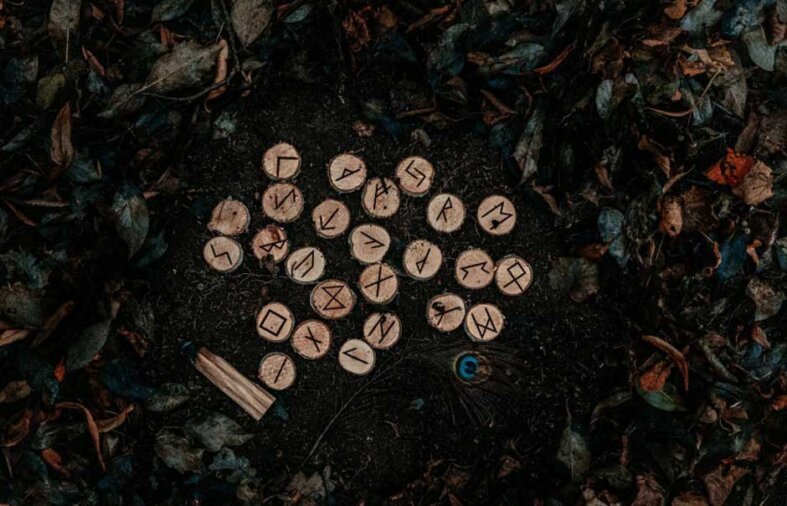The Vikings believed that the Scandinavian runes were not just an alphabet. The mysterious symbols were believed to have strong magical properties. We decided to find out how the magic of the runes and other Nordic symbols appeared and worked.
It is known that the Vikings were not prolific writers and did not leave many literary monuments for their descendants. However, writing was sacred to them. It was believed that the god Odin gave the Scandinavian runes so that people would learn to shape the world with the help of magic. For example, in Scandinavian legends, many great heroes used runes to heal and deceive enemies.
In this article, we will figure out how exactly the runes and other Nordic symbols appeared and what they were used for. This post will be useful for those who have started studying Nordic symbols. If you are a student and need to submit a paper on this topic, you can read this article and write a summary or analysis of it. You can use the tips on summary writing to handle your assignment more efficiently.
The legend of the origin of the runes
Translated from Old Norse, “Rune” means “secret” or “mysterious.”
According to Scandinavian mythology, one day, the supreme god Odin saw the Norns, the Scandinavian mistresses of fate, at the base of the world tree Yggdrasil. They used runic signs to write fate. Thirsty for this knowledge, Odin decided to comprehend the secrets of the runes himself. To do this, he voluntarily hanged himself on Yggdrasil in order to discreetly observe the mysteries of the Norns. There, he remained for nine days and nights, looking into the Well of Destiny. In this way, he managed to gain knowledge of the runes and later brought it to the Vikings as an alphabet that explained the world. A little while later, the Vikings realized that the runes could be used as a magical tool to change fate.
Linguistic evolution of the runes
Linguists have established that the runic alphabet used by the Vikings was based on early Italic alphabets. The first Germanic runes were used as early as the 1st century AD. In Scandinavia, the runic alphabet, known as the Elder Futhark, can be dated back to at least 400 AD. A complete set of 24 runes was inscribed on the Kylver Stone (Gotland, Sweden) in the early 5th century.
However, around 800 AD, the Elder Futhark evolved to better suit the Scandinavian languages. This resulted in a new alphabet of 16 symbols, known as the Younger Futhark. In Denmark, Sweden, and Norway, the situation was slightly different. About 6,000 surviving runic inscriptions dating from the period between 800 and 1200 AD evidence this.
When did the runic alphabet cease to be used?
Around 1200 AD, due to the spread of Christianity, the runes were replaced by the Latin alphabet. As an example of this, in the 13th century, the Icelandic writer Snorri Sturluson, known for his stories about Scandinavian mythology and Viking history, used transliterated Latin.
Viking rune magic
It is believed that the patterns of runic symbols thrown on the ground can reveal the mysteries of fate. However, in reality, the Vikings used runes not so much for prophecy as for spells. This was done not by the female witches, “Seidras,” who were often consulted to predict the future, but by educated male warriors. According to Scandinavian texts, they carved victory runes on weapons, wave runes on the sides of ships and oars, and life runes on whalebones and tablets to heal wounds and illnesses after battles.
Perhaps the most famous example of the use of runic magic is preserved in the “Egil’s Saga.” In the work, the main character meets a farmer whose daughter is very ill for an unknown reason. Egil conducts an investigation and finds a whalebone with a roughly carved runic symbol in her bed. It turns out that a local boy put it there to help a girl, but because the rune wasn’t quite right, it made her sicker. This story highlights the dangers of using ancient runes incorrectly.
Valknut
The symbol represented Viking warriors who had fallen in battle. It was often used on gravestones, on warriors’ shields and armor, and in reference to Odin, the Father God who was responsible for taking fallen warriors into Valhalla. It is a popular symbol of strength, courage, fearlessness, and the fight against evil.
Triquetra
It consists of three interconnected arcs with no beginning or end. In Scandinavian culture, the Triquetra symbolized eternal spiritual life, which was also considered to have no beginning or end. Christianity later adopted the Triquetra, which was used to represent the Holy Trinity.
Icelandic magical grimoires
Several ancient grimoires (15th-19th centuries) have survived to this day, describing the purpose of the symbols and explaining how to use them correctly. These texts reflect practices that continued for 500 years after the end of the Viking Age and the mass conversion to Christianity. Although these grimoires show evidence of Old Norse influence, they are also clearly borrowed from the occult texts of Renaissance Christianity, as Norse gods and Christian saints are often mentioned together.








